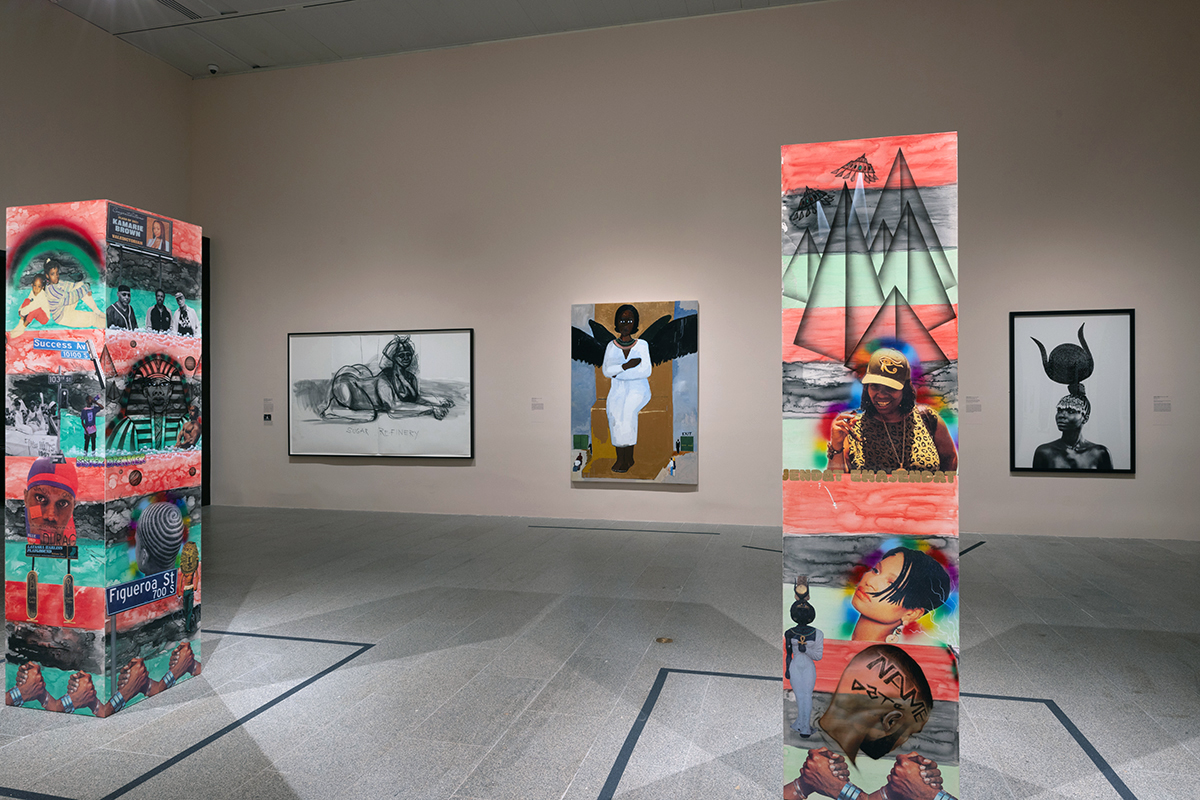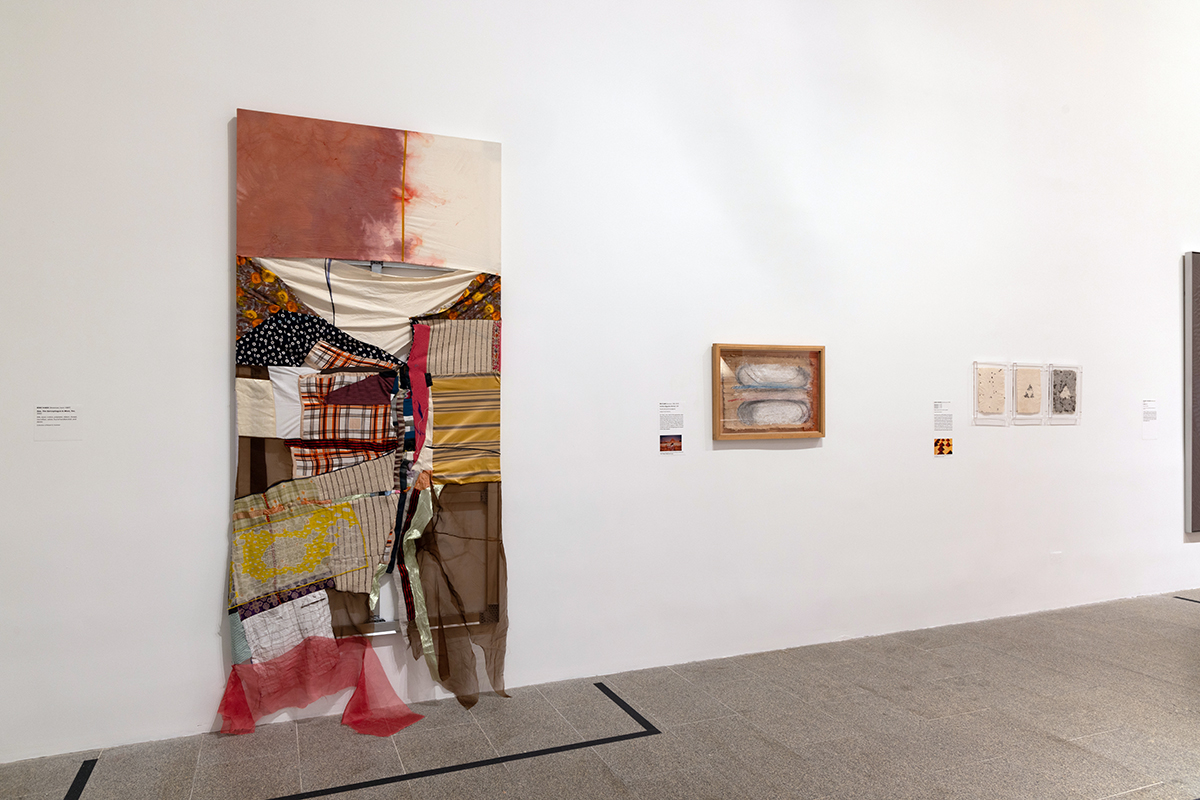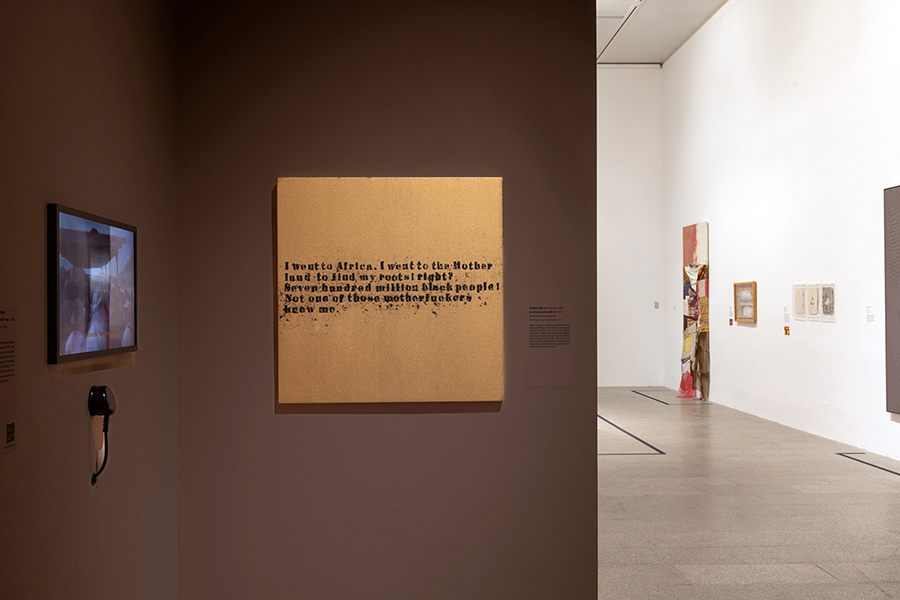Akili Tommasino, curator of modern and contemporary art at the Metropolitan Museum of Art in New York, came to the American Academy in Rome in March 2023 for a two-month stay as the Cynthia Hazen Polsky/Metropolitan Museum of Art Visiting Curator. During his time there, Tommasino continued work that he had begun years ago in preparation for the exhibition that would become Flight into Egypt: Black Artists and Ancient Egypt, 1876–Now, a highly anticipated and critically acclaimed exhibition that opened at the Met in November 2024. His research while in residency relied not only on archival access but also on the human networks fostered by the Academy: introductions to potential collaborators, shared intellectual discourse, and firsthand engagement with the city’s monumental landscape. This collaborative spirit extended beyond the Janiculum, influencing both his project and the work of those around him, and it only strengthened his lifelong relationship with Italy.
Eleven Academy fellows and residents are among the distinguished artists featured in the exhibition: Terry Adkins (2010 Fellow), Barbara Chase-Riboud (1957 Affiliated Fellow), Houston Conwill (1985 Fellow), Dream the Combine (2023 Fellows Jennifer Newsom and Tom Carruthers), David Hammons (1990 Fellow), Glenn Ligon (2019 Resident), Eric N. Mack (2022 Fellow), Julie Mehretu (2020 Resident), Kara Walker (2016 Resident), and Fred Wilson (2020 Resident). Even more collaborations took shape after Tommasino returned to New York to bring the exhibition together, including significant historical and scientific research on the pigment Egyptian blue by Anna Serotta (2015 Fellow) and help from Lynn Nottage (2023 Resident) with securing the rights to use “Remember the Time,” the song by the late Michael Jackson.
Tommasino talked with Laura Cabezas, communications officer in Rome, and answered some questions she posed about his work on the exhibition and its relationship to the American Academy in Rome.
Your expertise bridges the subjects of cultural exchange, identity, modernism, and curatorial practice. How did your academic and professional journey lead you to conceptualize the exhibition?
The concept of Flight into Egypt: Black Artists and Ancient Egypt, 1876–Now—an exploration of the modern reception of ancient Egypt—was informed by my academic and professional journey as much as by my personal experience. The project was born of my lifelong observation of the dissonance between Black communities’ promotion of ancient Egyptian imagery as African and the separation of museum collections of ancient Egyptian art from those designated as African. The exhibition was formally conceived in 2018 with a conversation that I had with a friend and former colleague, the artist Chet Gold, in a staff staircase at the Museum of Modern Art, about Fred Wilson’s sculptural installation Grey Area (Brown version) (1993). My time as a curatorial assistant at the Museum of Modern Art was ending, and I was about to embark on my role as associate curator for the Museum of Fine Arts, Boston, which, like the Met, has encyclopedic collections, including perhaps the largest collections of ancient Egyptian art and artifacts in the United States.

Given my move to this expansive context, I aimed to pitch an exhibition with a broader temporal purview than I might have proposed at a museum devoted exclusively to modern and contemporary art. Grey Area (Brown version), which features five replicas of the famed bust of Nefertiti (now held in the Neues Museum, in Berlin), ranging from pale beige to dark brown, elegantly metaphorizes the coexistence of competing claims to the heritage of ancient Egypt, a conundrum that had preoccupied me as long as I can remember. I joined the Met (my dream job) in 2021 with a mandate to realize the project I began to develop in Boston.
During your time at the American Academy in Rome, you shared meals and conversations with a multidisciplinary community of artists and scholars. How did those relationships with those in your cohort, such as the architects Jennifer Newsom and Tom Carruthers, who became a recent addition to the show, influence your curatorial vision and lead to their inclusion?
My conversations with the artists and scholars at the American Academy in Rome enriched Flight into Egypt in innumerable ways, inspiring unanticipated lines of inquiry, refining my research, and sparking dialogues that continue to this day. A meal shared with Jennifer Newsom and Tom Carruthers, during which we talked about our common fascination with the ancient Egyptian obelisks installed throughout the Eternal City, led me to invite them to participate in the exhibition. Their new sculpture Pyramidion (2024), which they produced with the support of a prestigious grant from the Graham Foundation, is an evolution of the steam-producing sculpture Make It Rain (2014) that they designed for a public plaza in Vancouver. Whereas ancient Egyptian obelisks emblematized the projection of the sun’s rays toward the earth, their inverted obelisk connotes movement from our planet to the stars.
With nearly 200 works spanning 150 years, the exhibition tackles a monumental history. How did you approach curating this story, balancing historical icons with contemporary relevance?
Flight into Egypt indeed tackles a monumental history, showcasing artistic and scholarly production from the nineteenth century to the Harlem Renaissance to the Black Arts Movement of the 1960s and 1970s to the present day. The exhibition is divided into ten thematic sections featuring works from the Met’s collection and international loans from public and private collections tracing subjects including how Black artists and other agents of culture have employed ancient Egyptian imagery to craft a unifying identity, the contributions of Black scholars to the study of ancient Egypt, and the engagement of modern and contemporary Egyptian artists with ancient Egypt. I sought to maximize the variety of objects (artistic and documentary; fine art and pop culture), their media (paintings, sculptures, drawings, prints, photographs, installations, video, performance), and their genres (institutionally sanctioned fine art as well as vernacular cultural expression) to demonstrate the diversity of Black and modern Egyptian perspectives on ancient Egypt.

Several AAR alumni, including Barbara Chase-Riboud, Terry Adkins, Fred Wilson, and Julie Mehretu, have explored themes of diaspora and heritage in their work. How did their perspectives influence the exhibition’s narrative? In what ways do you think their time at the Academy might have impacted upon their work and research? Do you see this experience as a shared connection among them?
AAR alumni constitute the backbone of Flight into Egypt. Not only was Fred Wilson’s aforementioned work a point of origin for the exhibition, my extensive dialogues with him over the years have amplified my understanding and helped shape my project. Julie Mehretu, whom I met when I was in college, introduced the work of Sun Ra to me, and has been a supportive and inspirational interlocutor. Conversations with the formidable Paris-based Barbara Chase-Riboud influenced the exhibition’s framing of Black artists as part of a global diaspora. The body of work that emerged from David Hammons’s fellowship informed my research into Rome’s absorption of ancient Egypt. The visionary and polymathic artist Terry Adkins (1953–2014), whom I never met but know through his work, has had a tremendous impact on my curatorial practice through his bridging of sculpture and performance but also of art and science through his homage to George Washington Carver’s purported 1923 recreation of the formula for Egyptian blue pigment. I’m also grateful for dialogues with the painter Eric N. Mack. The tremendous impact of these outstanding artists’ time in Rome is eloquently described in their writings (e.g., Chase-Riboud’s memoir I Always Knew) and evident in their artwork. I certainly view their residencies as a point of connection in their diverse careers, and I was eager to pursue research at the American Academy in Rome so that I might share in this intergenerational legacy.
Rome, with its Egyptian obelisks and the Pyramid of Cestius, exists at a unique crossroads between ancient Egyptian influence and European modernity. How did your residency in Rome inspire your approach to exploring the connections between African diaspora culture and ancient Egypt?
My time at AAR made abundantly clear to me the extent to which ancient Egyptian culture was absorbed by ancient Rome, and moreover how the reception of ancient Egypt continues to be filtered by Eurocentrism. A 2006 photograph by the artist Carrie Mae Weems (2006 Fellow) entitled Pyramids of Rome—Ancient Rome stages an apt analogy of Rome as the crossroads between ancient Egyptian and modern Europe. Confronted with the eclecticism of the Roman consumption of Egypt, the tacit aim of many of the artists in Flight into Egypt is to conceptually restore Egypt to Africa.

Many of the artists in the exhibition have spent significant time in Europe or worked in global contexts. How do you think geography influences the way the African diaspora engages with ancient Egypt?
Geography influences the way the African diaspora engages with ancient Egypt in tremendous ways. Much of the discourse on this subject is premised on not only the modern era’s temporal distance from ancient Egypt but also the diaspora’s defining distance from the African continent. Geography frames identity. A gallery in Flight into Egypt entitled “Pilgrimage and Fellowship” explores how people of the African diaspora have sought to bridge their distance from the continent through travel and within community. And while most of the work presented in the exhibition is by Black Americans, works by artists from the Caribbean and by Egyptian and other African-born artists active in the United States, Europe, and elsewhere indicate the global diasporic resonance of ancient Egypt.
As this ambitious project opens, how do you hope it will shape ongoing conversations about identity, diaspora, and the reclamation of African heritage in the art world and beyond? What’s next for you in your exploration of these themes?
Inherited biases and the yearnings of identity construction are among the things that shape our understanding of the past. My hope is that visitors to the exhibition (and readers of the catalogue) will not only learn about the objects, but also about themselves. I plan to continue exploring this topic in my forthcoming doctoral dissertation.
Watch Akili Tommasino give a full walk through of Flight into Egypt and speak with Fred Wilson and Julie Mehretu.
Flight into Egypt: Black Artists and Ancient Egypt, 1876–Now closes at the Metropolitan Museum of Art on February 17, 2025.